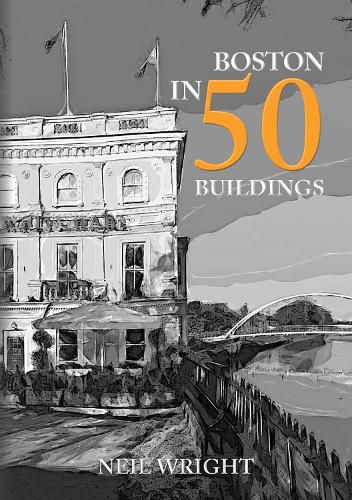Readings Newsletter
Become a Readings Member to make your shopping experience even easier.
Sign in or sign up for free!
You’re not far away from qualifying for FREE standard shipping within Australia
You’ve qualified for FREE standard shipping within Australia
The cart is loading…






The Lincolnshire market town and small port of Boston is nearly a thousand years old, having been founded soon after the Norman Conquest. Located close to The Wash, it flourished in the thirteenth and fourteenth centuries and exported much of the wool from the Midlands and north of England, which was then the basis of the country’s wealth. In some years it paid more tax than London or any other port, and also had a fair share of international importance. Its medieval wealth allowed it to build one of the largest churches in England, with the tallest tower. Although Boston declined in the later Middle Ages it still served as the local port for Lincolnshire. After the Reformation it became a centre for Puritanism, and in the 1630s its leading citizens emigrated to create a new Boston in New England. From the 1760s to 1840s the town had a second period of great prosperity when it exported grain from Lincolnshire to feed London. In the 1880s a new dock was built, which still flourishes. Today, its medieval street layout remains, along with many buildings from the Georgian period.
In this book, author Neil Wright highlights fifty of Boston’s buildings - old and new - to explore the fascinating history of the town. Through a wide range of structures, from churches to pubs and warehouses to windmills, here are the buildings and landmarks that reveal Boston’s development across the centuries.
Illustrated throughout, this accessible perspective of the town’s architectural heritage will interest residents and visitors alike.
$9.00 standard shipping within Australia
FREE standard shipping within Australia for orders over $100.00
Express & International shipping calculated at checkout
The Lincolnshire market town and small port of Boston is nearly a thousand years old, having been founded soon after the Norman Conquest. Located close to The Wash, it flourished in the thirteenth and fourteenth centuries and exported much of the wool from the Midlands and north of England, which was then the basis of the country’s wealth. In some years it paid more tax than London or any other port, and also had a fair share of international importance. Its medieval wealth allowed it to build one of the largest churches in England, with the tallest tower. Although Boston declined in the later Middle Ages it still served as the local port for Lincolnshire. After the Reformation it became a centre for Puritanism, and in the 1630s its leading citizens emigrated to create a new Boston in New England. From the 1760s to 1840s the town had a second period of great prosperity when it exported grain from Lincolnshire to feed London. In the 1880s a new dock was built, which still flourishes. Today, its medieval street layout remains, along with many buildings from the Georgian period.
In this book, author Neil Wright highlights fifty of Boston’s buildings - old and new - to explore the fascinating history of the town. Through a wide range of structures, from churches to pubs and warehouses to windmills, here are the buildings and landmarks that reveal Boston’s development across the centuries.
Illustrated throughout, this accessible perspective of the town’s architectural heritage will interest residents and visitors alike.